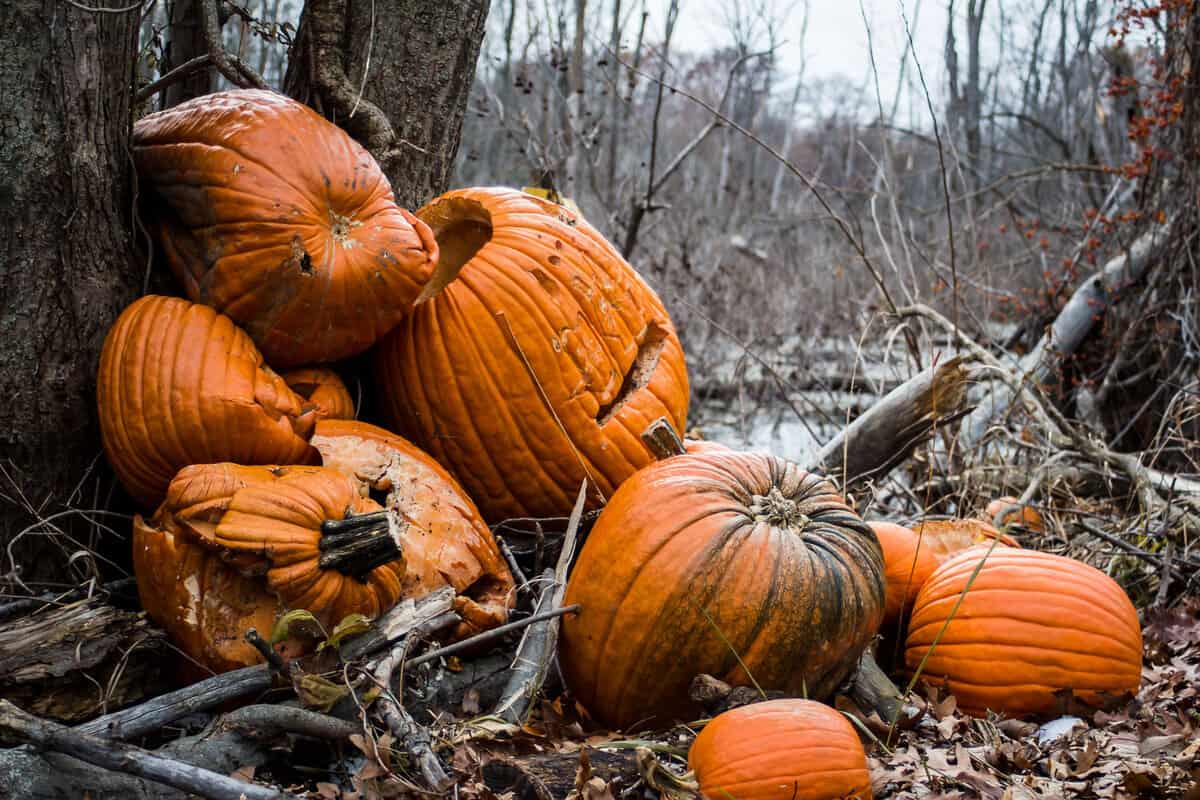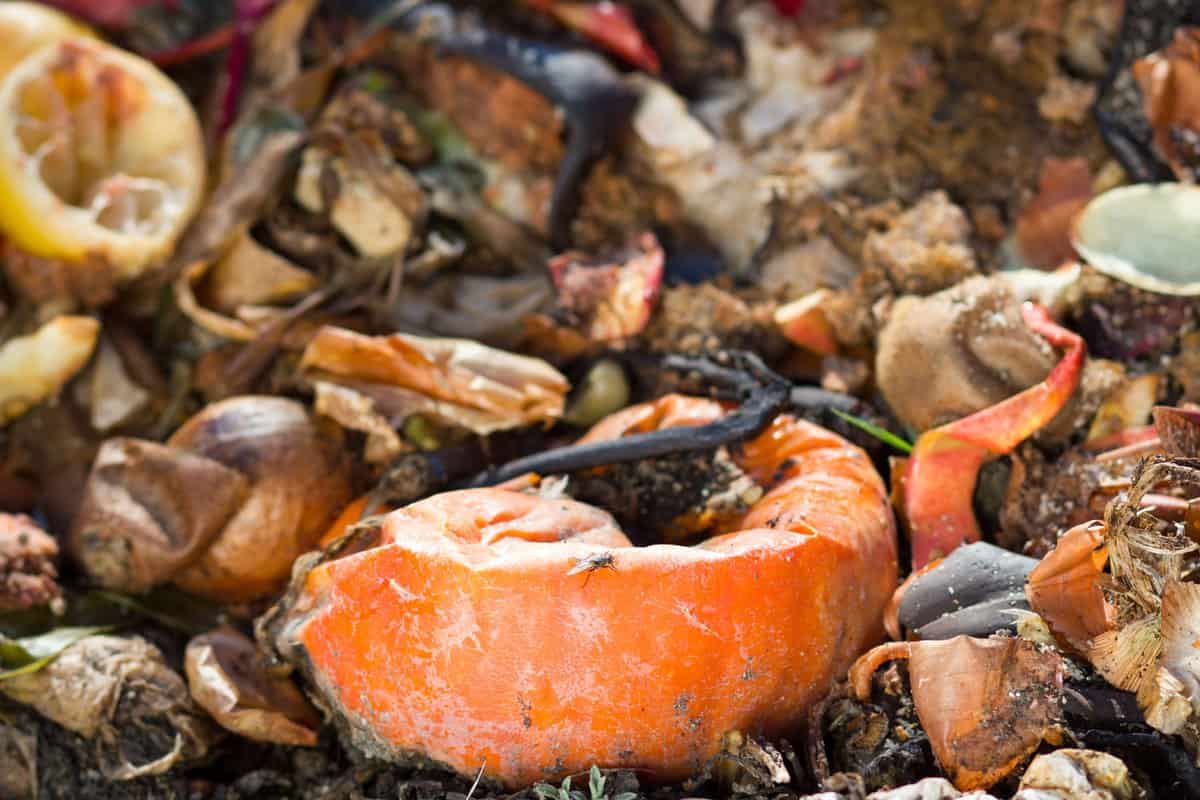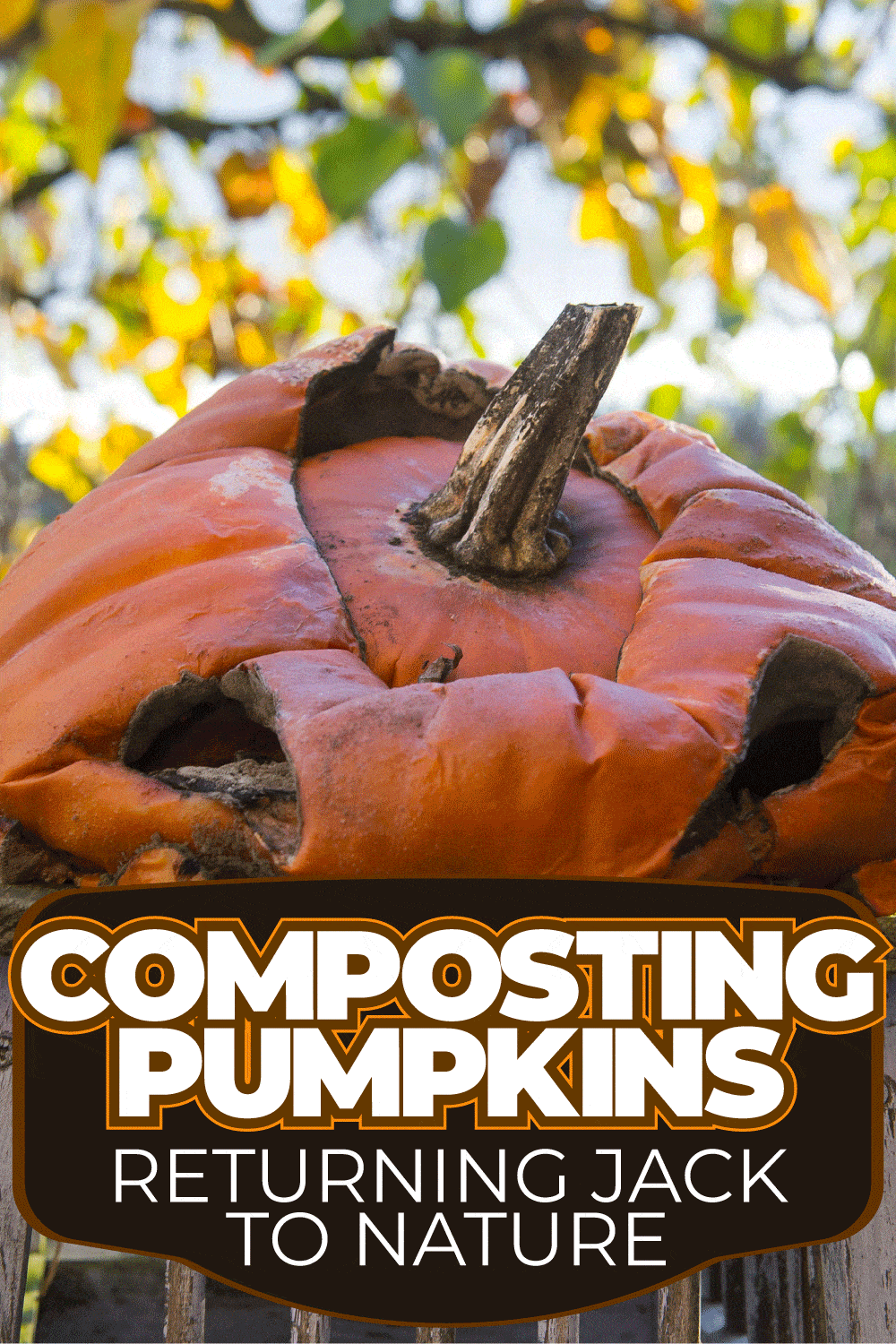Are you looking for a fun and eco-friendly way to dispose of your Halloween pumpkins?
Then, you must try composting! Not only is it super easy, but it's also a great way to return Jack to nature and create nutrient-rich soil for your garden.

By composting your pumpkins, you're reducing waste and helping your garden thrive with healthy and organic plants.
So don't let those pumpkins go to waste; try composting today and see the fantastic benefits for yourself!
Why You Should Compost Pumpkins
Composting pumpkins is a great way to reduce waste and help the environment.
When you compost your pumpkins, you return organic matter to the earth for new life to flourish.
This completes nature's cycle and helps to close the nutrient loop. Here are some of the reasons why you should compost your pumpkins:
Environmental Benefits
Composting your pumpkins has several environmental benefits. It helps to reduce the amount of organic waste in landfills, which can take up valuable space and produce harmful greenhouse gases.

By composting your pumpkins, you are helping to reduce greenhouse gas emissions and combat climate change.
Additionally, composting your pumpkins can help to improve soil health and reduce the need for chemical fertilizers, which can harm the environment and wildlife.
Reducing Waste
Composting your pumpkins is a great way to reduce waste. Instead of throwing your pumpkins away, you can turn them into nutrient-rich soil that can be used in your garden or given to a local farmer.
How to Compost Pumpkins
Composting is an excellent option if you're looking for a way to give your pumpkins a second life after Halloween!
Here's a guide on how to compost pumpkins:
Preparing Your Pumpkin
Remove any non-biodegradable decorations
Before composting your pumpkin, remove non-biodegradable decorations such as paint, stickers, or candles.
Cut your pumpkin into smaller pieces
To speed up the composting process, cut your pumpkin into smaller pieces. You can use a knife or even break it apart with your hands. Make sure to remove any seeds or stringy bits as well.
Add the pumpkin to your compost pile
Once your pumpkin is cut up, add it to your compost pile.
If you don't have a compost pile, you can start by layering your pumpkin pieces with other organic materials such as leaves, grass clippings, and food scraps.
Turn your compost pile
To help your pumpkin decompose faster, turn your compost pile with a pitchfork or shovel every few weeks.
This will help mix up the materials and allow air to circulate, which is essential for composting.
Wait for the compost to mature
Depending on the size of your pumpkin and the conditions in your compost pile, it may take several weeks or even months to decompose fully.
Once your compost is dark, crumbly, and smells earthy, it's ready to use in your garden.
Choosing a Composting Method
There are several methods you can use to compost your pumpkin:
- Composting Bin: If you have a composting bin, add your pumpkin pieces and other compostable materials, such as leaves and food scraps. Make sure to mix the materials regularly to ensure they decompose evenly.
- Trench Composting: Trench composting involves digging a hole in your garden and burying your pumpkin pieces in the hole. This method is excellent for those who don't have a composting bin.
- Vermicomposting: Vermicomposting involves using worms to break down your pumpkin pieces. You can purchase a worm bin or make your own. Add bedding material like shredded newspaper to the chest before adding your pumpkin pieces.
Monitoring Your Compost
After you've added your pumpkin pieces to your composting method, monitoring the compost is essential.
Check the moisture level of the compost regularly and add water if it's too dry. You should also turn the compost regularly to ensure it decomposes evenly.
Related Posts:
- How to Choose the Best Pumpkins at the Pumpkin Patch
- How Much Water Do Pumpkins Need? [And How Often To Water Them]
Common Mistakes and Solutions
When it comes to composting pumpkins, there are a few common mistakes that people make. Fortunately, there are also some easy solutions to these problems.
Avoiding Pests
One of the biggest challenges of composting pumpkins is avoiding pests.
If you're not careful, you could have a compost pile of ants, flies, and other unwanted critters.
To avoid this problem, keep your compost pile covered with a lid or tarp. This will help keep the pests out and prevent them from getting into your compost.
Another solution is to add some diatomaceous earth to your compost pile. This natural substance is made from the fossilized remains of tiny aquatic organisms and is highly effective at killing insects.
Managing Smell and Moisture
Another common problem with composting pumpkins is managing the smell and moisture.
Pumpkins are high in moisture, leading to a smelly and slimy compost pile.
To prevent this problem, add plenty of dry, carbon-rich materials to your compost pile, such as leaves, straw, or shredded paper. This will help absorb the excess moisture and keep your compost pile smelling fresh.
Another solution is to turn your compost pile regularly. This will help mix the materials and promote good airflow, which will help prevent the compost from becoming too wet and smelly.
Related: Controlling Common Pumpkin Pests And Diseases: A Friendly Guide
Click here to buy Diatomaceous Earth on Amazon.
Fun Facts About Pumpkin Composting
Composting pumpkins is a great way to reduce food waste and produce organic fertilizer for your garden. Here are some fun facts about pumpkin composting:
- Pumpkins are a great source of nitrogen and moisture for your compost bin. They are also rich in vitamins, which benefit both people and plants.
- Every pumpkin part, including the seeds, skin, and flesh, is compostable. However, cutting them into smaller pieces before adding them to your compost heap or bin is best.
- Pumpkin compost can also help suppress weeds and reduce erosion by improving soil structure and stability.
So, composting pumpkins is a simple and effective way to reduce waste and enrich your garden soil.
Turn your Halloween jack-o-lanterns into a valuable resource for your plants and the environment!


